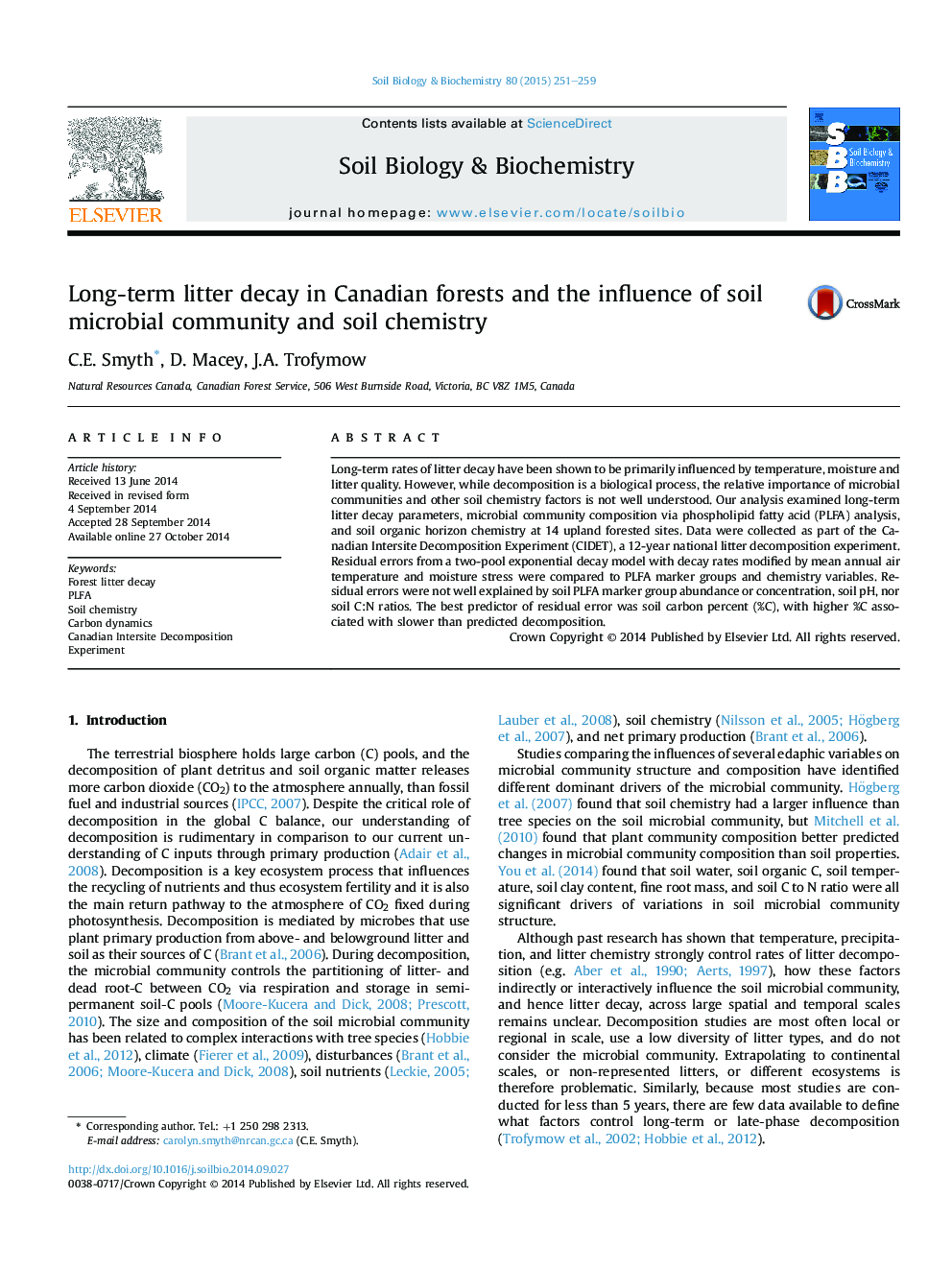| Article ID | Journal | Published Year | Pages | File Type |
|---|---|---|---|---|
| 8364423 | Soil Biology and Biochemistry | 2015 | 9 Pages |
Abstract
Long-term rates of litter decay have been shown to be primarily influenced by temperature, moisture and litter quality. However, while decomposition is a biological process, the relative importance of microbial communities and other soil chemistry factors is not well understood. Our analysis examined long-term litter decay parameters, microbial community composition via phospholipid fatty acid (PLFA) analysis, and soil organic horizon chemistry at 14 upland forested sites. Data were collected as part of the Canadian Intersite Decomposition Experiment (CIDET), a 12-year national litter decomposition experiment. Residual errors from a two-pool exponential decay model with decay rates modified by mean annual air temperature and moisture stress were compared to PLFA marker groups and chemistry variables. Residual errors were not well explained by soil PLFA marker group abundance or concentration, soil pH, nor soil C:N ratios. The best predictor of residual error was soil carbon percent (%C), with higher %C associated with slower than predicted decomposition.
Keywords
Related Topics
Life Sciences
Agricultural and Biological Sciences
Soil Science
Authors
C.E. Smyth, D. Macey, J.A. Trofymow,
